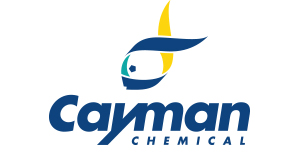GLP-1R (human, recombinant; aa 24-145) (Fc-tagged)
GLP-1R (human, recombinant; aa 24-145) (Fc-tagged)
SKU
CAY40466-1
Packaging Unit
1 mg
Manufacturer
Cayman Chemical
Availability:
loading...
Price is loading...
Formulation: Lyophilized from sterile PBS, pH 7.4
Purity: ≥95% estimated by SDS-PAGE
Formula Weight: 0
Shelf life (days): 365
Notes: Glucagon-like peptide 1 receptor (GLP-1R) is a transmembrane G protein-coupled receptor (GPCR) and a member of the secretin family of receptors.{68630} It is composed of extracellular and transmembrane domains responsible for ligand binding and an intracellular domain responsible for signaling.{68630,68631} It is primarily expressed in β-cells of the pancreas but also in adipocytes and pancreatic acinar cells, as well as the brain, kidney, stomach, and heart.{68632} When glucose levels are high, the incretin hormone GLP-1 binds to GLP-1R, which couples to Gαs and induces signaling through the cAMP/PKA pathway to stimulate insulin biosynthesis, potentiate insulin secretion, reduce glucagon secretion, and slow gastrointestinal mobility to increase satiety.{68630,68632} GLP-1R can couple to either Gαs, Gαi/o, or Gαq and recruit β-arrestin to varying degrees in response to different agonists, a phenomenon known as biased agonism, with lower β-arrestin recruitment following activation by agonists with improved antidiabetic effects. Loss-of-function mutations in GLP1R are associated with reduced insulin secretion, which can be rescued in vitro with certain GLP-1R agonists and positive allosteric modulators (PAMs).{68633} GLP1R variants that impair cell surface expression of GLP-1R are associated with impaired glucose control, as well as increased adiposity, body mass index, and glycated hemoglobin A1c (Hb1Ac). Cayman’s GLP-1R (human, recombinant; aa 24-145) (Fc-tagged) protein is a disulfide-linked homodimer. The reduced monomer, composed of GLP-1R (24-145) fused to human IgG1 Fc at its C-terminus, consists of 360 amino acids, has a calculated molecular weight of 41 kDa, and a predicted N-terminus of Arg24 after signal peptide cleavage. As a result of glycosylation, the monomer migrates at approximately 52.3 kDa by SDS-PAGE under reducing conditions.
Purity: ≥95% estimated by SDS-PAGE
Formula Weight: 0
Shelf life (days): 365
Notes: Glucagon-like peptide 1 receptor (GLP-1R) is a transmembrane G protein-coupled receptor (GPCR) and a member of the secretin family of receptors.{68630} It is composed of extracellular and transmembrane domains responsible for ligand binding and an intracellular domain responsible for signaling.{68630,68631} It is primarily expressed in β-cells of the pancreas but also in adipocytes and pancreatic acinar cells, as well as the brain, kidney, stomach, and heart.{68632} When glucose levels are high, the incretin hormone GLP-1 binds to GLP-1R, which couples to Gαs and induces signaling through the cAMP/PKA pathway to stimulate insulin biosynthesis, potentiate insulin secretion, reduce glucagon secretion, and slow gastrointestinal mobility to increase satiety.{68630,68632} GLP-1R can couple to either Gαs, Gαi/o, or Gαq and recruit β-arrestin to varying degrees in response to different agonists, a phenomenon known as biased agonism, with lower β-arrestin recruitment following activation by agonists with improved antidiabetic effects. Loss-of-function mutations in GLP1R are associated with reduced insulin secretion, which can be rescued in vitro with certain GLP-1R agonists and positive allosteric modulators (PAMs).{68633} GLP1R variants that impair cell surface expression of GLP-1R are associated with impaired glucose control, as well as increased adiposity, body mass index, and glycated hemoglobin A1c (Hb1Ac). Cayman’s GLP-1R (human, recombinant; aa 24-145) (Fc-tagged) protein is a disulfide-linked homodimer. The reduced monomer, composed of GLP-1R (24-145) fused to human IgG1 Fc at its C-terminus, consists of 360 amino acids, has a calculated molecular weight of 41 kDa, and a predicted N-terminus of Arg24 after signal peptide cleavage. As a result of glycosylation, the monomer migrates at approximately 52.3 kDa by SDS-PAGE under reducing conditions.

 Deutsch
Deutsch










